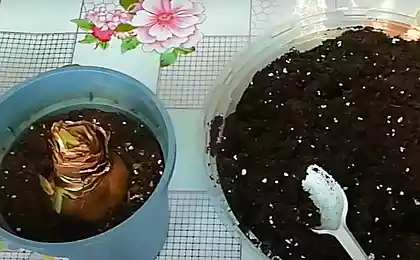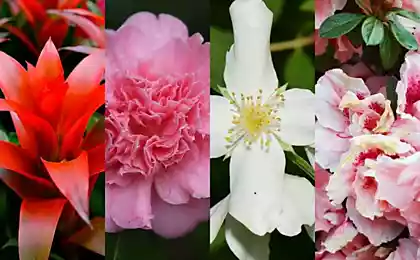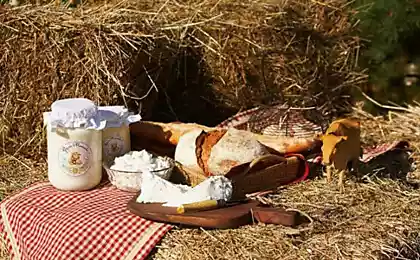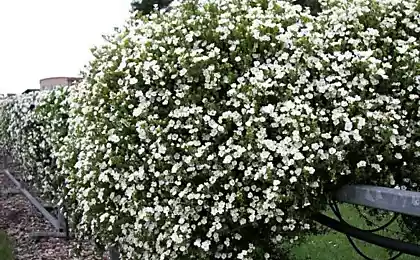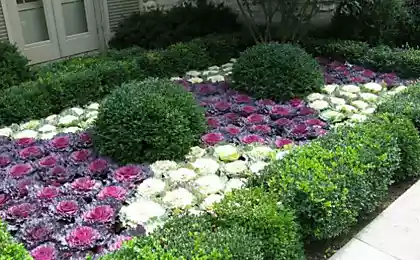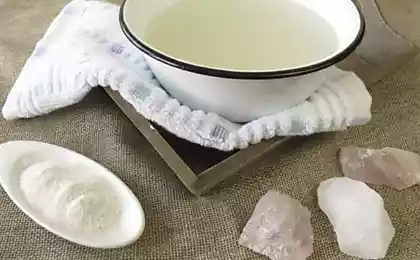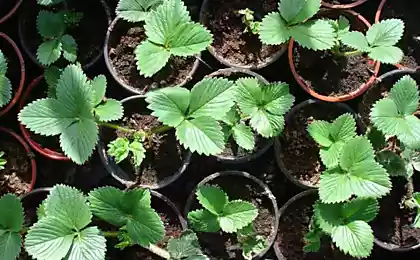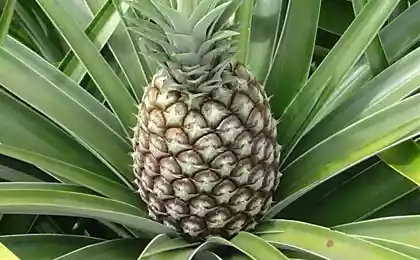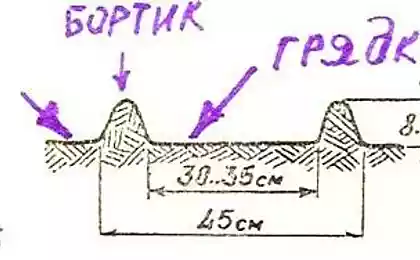610
There's the cultivation and care at home
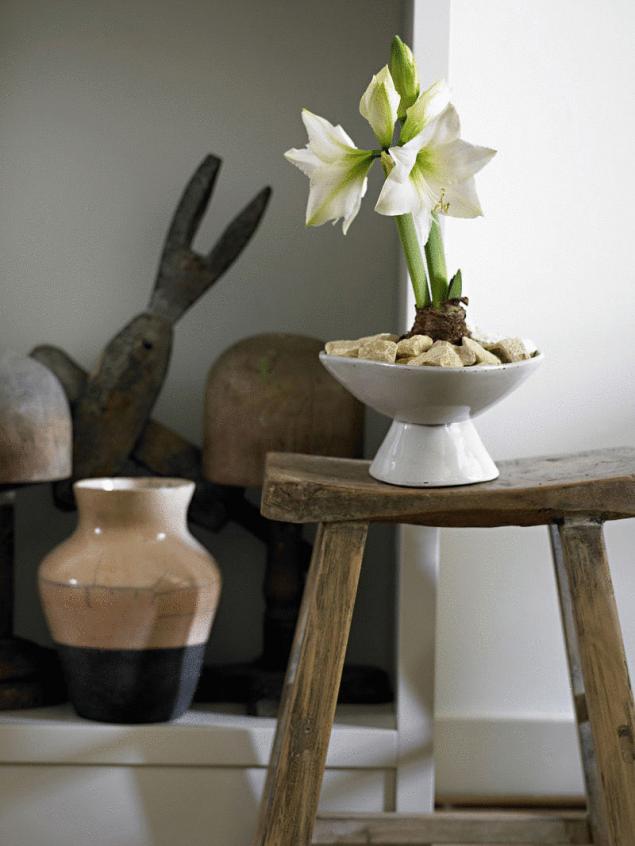
There is a plant of onion, comes to us from Central and Latin America. The plant belongs to the family amaryllidaceae, and of all the representatives of this family there the most common plant.
Description of the plant
There can bloom twice a year, depending on the size of the bulb plants. There are many varieties and hybrid forms of this plant, which differ from each other not only in color of flowers, but also their size.
The variety of colors
Hippeastrum leaves linear, flat, bright green or dark green, their length can reach 70cm. Leaves usually slightly curved. From the center of the leaf rosettes grow one or two hollow arrows on the top which produce flowers. The flowers of this plant are very similar to lilies, have a funnel shape, rather large. The number of colors on one arrow can vary from 2 to 4 pieces, in some cases, the number of flowers can reach up to 7 pieces. The colors of flowers depend on the variety and on Hippeastrum, usually flowers two-tone: red with green or white stains, pink with red stripes, white with pink spots etc.
Choice bulbs in the store
There you can buy ready-planted in the ground with leaves, or grow from bulbs. Throughout the period of distillation in autumn or spring bulbs of this plant is not difficult to find in any flower shop. The choice of the bulb depends on the time and duration of flowering, as well as the health and growth of plants.
Bulbs Hippeastrum, if they are healthy should look like this:
The upper scales should be dry, brown, smooth and evenly colored.
Collum, the neck and the follicle healthy thick and strong. Not permitted in the bulb of different spots, growths or seals.
If you buy already planted bulb, just pay attention to its appearance. Bulb must be strong, the upper scales brown dry if the bulb is soft or the upper scales mean wet bulb rot sick. If the plant with leaves, and they notice, they should be painted smoothly, without stains.
In the drainage holes of the pot should look through the white roots, if they are a different color, the plant should not be buying.
How to care for Hippeastrum

Temperature mode
The ideal temperature for this plant ranges from 23 to 25 ° C during daytime and 18 to 20 ° C at night. Temperature changes are especially sharp very bad impact on the growth of plants. Even short-term decreasing temperature below 5⁰С during the formation of the peduncle, can not only greatly delay flowering, but to make it impossible.
The plant from time to time need a rest period, that would translate gippeastrum during this period, the temperature regime should be gradually reduced to 12-15⁰С.
During the rest of the onion plants should be stored at a temperature of from 10 to 12 ° C, but should be avoided by lowering the temperature below 10⁰С, otherwise it will not further impact the vegetation of the plant.
Humidity the Plant is not particularly demanding of high humidity, so do not raise it above 80%, otherwise the plant may get Stagonospora.
When there is insufficient humidity, you can spray there, but it is not mandatory. During flowering, spray the plant should not be.
The mode of illumination
Special requirements for light when growing plants.
There feels good and in direct sunlight and in partial shade.
The substrate for growing
For growing plants the perfect light waterproof and breathable soil. It is best to take substrate of the following composition: one part peat or leaf soil, one part peat and one part river sand. It is desirable to produce a complete replacement of soil in the pot every 2-3 years.
Fertilizer and fertilizing plants Like all other plants, there needs regular fertilizing during active growth and development. A month before the onset of the rest period of the feeding cancel. During the growing season and growth the frequency of fertilizer should be every 10-14 days.
The composition of the fertilizer depends on the stage of plant development.
In the period of active growth after a period of rest should fertilize the plant of potash fertilizers.
In the early growing season should be obtained for feeding nitrogen-potassium mixture in the ratio of 40\60, in the middle front of the formation the stems of nitrogen-phosphorus-potassium in the proportions 30\30\40.
In the flowering period apply phosphorus-potassium top dressing in the following proportions 40\60.
Rules of conduct fertilizing fertilizing Before you plant be sure to water, it is not necessary to pour the fertilizer in dry soil, otherwise you can bring the plant more harm than good.
It should be feeding earlier than six weeks after planting plants in the ground. The solution of fertilizer to plant strictly according to the directions on the package.
It is best to fertilize Hippeastrum to use a specific fertilizer for bulbous plants.
Watering
Watering Hippeastrum requires care. The fact is that the plant is very poorly tolerate waterlogged soil and stagnant water in the pot. In this case it is better to overdry the soil than to pour. Watering this plant is produced as the drying of the upper soil layer. From overflow and stagnation of water in the pot the plant can get sick or die.
In early autumn, watering is gradually negated, as the plant included with the rest. Further watering is done once in 30-40 days very sparingly, when watering try not to get into the very flesh. Normal irrigation mode is introduced, since January, watering moderately.
Flowering: flowering Hippeastrum successful depends on two major factors — the availability of sufficient nutrients in the bulb, which is regulated by feeding plant, and proper rest period, which should get there after flowering. About the rest period is to talk separately.
There's planting and transplanting

Transplantation is Quite common to hear the question how often should I replant there? This plant demanding on soil fertility, and if you want to see it bloom 2 times a year it should be transplanted every year. If every year with transfers, you do not want to bother, it is possible to produce transplants every two years, but not less. Otherwise the plant will become smaller, the flowers and the arrows are small.
Transplant is usually performed either before the onset of the dormant period or at the end. In other periods of the life of a plant is transplanted not worth it, especially for the period of the formation of the flower arrows and the flowering period.
Planting bulbs
Properly planted bulb has to be elevated above ground level by one third of its thickness. It is not necessary to remove when planting dry flakes, you can damage the bulb.
Zaglubit bulb to the desired depth, it should be moderately watered and you can expect germination.
Reproduction of gippeastrumov
Hippeastrum propagated in various ways: by seeds, by division of the bulbs and the children. The simplest and most common method of propagating this tree is the reproduction of children.
Kids – this is daughter bulbs which grow on the sides of the main parent bulb. In order to isolate their daughter bulbs you first need to gently separated from the parent bulb, if the branch was formed of the wound, it should be sprinkled with powdered charcoal, to avoid getting infected, and can be planted in the prepared substrate. The soil for some time after planting should be kept moist for the education of children a good root system. When the bulbs will sprout and will appear with the young leaves of onions can be seated in separate pots. For good growth plants should take pots whose diameter exceeds the diameter of the bulb is 1-2 cm in diameter pot can be as the diameter of the bulbs of 6-8cm. the Bulbs should not be sunk more than half the height. Further care of young plants is no different from caring for adult plants.
There's care after floweringa rest Period of gippeastrumov
Flowering Hippeastrum depends on how the plant has passed the period of rest. Without such rest the plant is very hard to get to bloom. In the usual case around the middle of July, should stop to feed the plant, and at the end of August and stop watering. After the leaves dry, they must be removed, and the pot needs to be put in a dark, dry place. During the rest period the plant should be in a room where the temperature is maintained in the range of 10 to 14 °C. So the plant should be contained until mid – late December. At the beginning of January – February, the plant should be moved to a bright location and resume watering and fertilizing. After a while you will notice that the plant has produced leaves and then the flower arrow. Usually gippeastrum bloom and a half to two months after waking up.
There is why does not bloom or how to get to flower gippeastrum
So, to get to flower gippeastrum, you can send a plant for a while in the dormant period.
In addition, you can speed up the onset of flowering after a bulb before planting in hot water for 2-3 hours. The water temperature should be between 42 to 45 °C.
Good effect on flowering plants have this procedure as trimming the leaves, then in a month you need to stop watering. Then apply the normal rules of care and the plant will soon delight you with flowers.published
P. S. And remember, only by changing their consumption — together we change the world! ©
Source: www.art-pen.ru/
Krovoochishchajushchee burdock root: properties and applications
The main mystery of the living water
